
5 Fast Facts about Textile Recycling

Here at Chicago Textile Recycling, we think recycling your textiles is not only important, but vital to the well-being of our planet. It cuts down immensely on waste at landfills and has an incredible impact on greenhouse gas emissions. Ready to learn five fast facts?
3.8 Billion Pounds
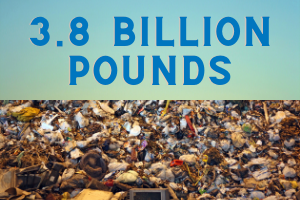
“The Environmental Protection Agency estimates that the average person throws away 81 pounds of clothing per year. That adds up to 3.8 billion pounds of unnecessary waste added to our landfills.” (quote found here)
Why do people choose to throw away textiles? Potential reasons could be:
- Not enough information about what can and cannot be recycled (found here)
- Easier to throw away (found on infographic here)
- Resources for textile recycling are too far away
Each of these reasons are things we can work to eradicate together. As we educate our readers on textile recycling, we can all do our part in sharing this information with neighbors and friends and families, extending knowledge so more people know the profound and long-lasting benefits of recycling. We can likewise encourage and challenge ourselves and others to take the time and make the choice to recycle textiles instead of throwing them away. And if you know of areas in need of a textile recycling bin, please contact us so that we can provide more coverage for those who want to recycle.
Clean and Dry
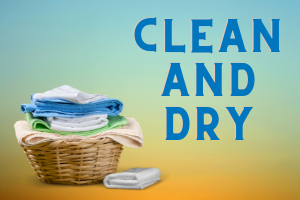
“Any textile item, even if it’s worn, torn, or stained, can be recycled. You can even recycle a single shoe! Items simply need to be clean and dry.”
In our previous blog on “Textile Recycling 101”, we discussed our ability to accept worn, torn or stained textiles as long as the items are clean and dry. Even one wet or smelly item in your donation bag can render the whole bag or box unusable so please make sure each and every item is clean and dry before dropping off your donation.
And yes, though paired shoes are preferred, we also accept single shoes.
Decreased Need for Natural Resources

“Recycling clothing and textiles decreases the use of natural resources, such as water used in growing crops and petroleum used in creating new clothing and textiles. It also decreases the need for chemicals used in manufacturing new textiles and the pollution caused by the manufacturing process.”
In addition to keeping textiles out of landfills, recycling old clothing and textiles also benefits the earth when others use your donated items. Wearing used clothing and shoes or purchasing used textiles such as curtains reduces the need for producing new items. This cuts down on precious natural resources needed to produce new textiles.
Greenhouse Gas Emissions
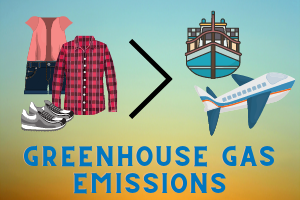
“10% of global greenhouse gas emissions are caused by clothing and footwear production. This is more than all international flights and maritime shipping combined.” (found here)
Overproduction in the fashion industry is a huge problem. Though fashion companies need to do their part in producing less clothing and make their products more sustainable, the consumer also has a responsibility in what they purchase. With such a large amount of clothing available in the world, choose wisely and sustainably in your purchase decisions. To cut back on greenhouse gases, consider buying used at thrift stores or in one of many online used marketplaces.
95% Can Be Recycled
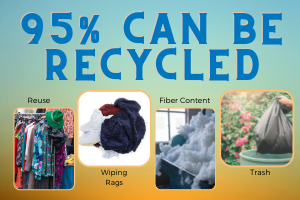
According to the infographic found here at the website for Secondary Materials And Recycled Textiles, “95% of textiles worn or torn can be recycled.”
This is a HUGE reason to recycle old textiles. With 85% of textiles being thrown away, what a big difference it would make to instead recycle those items. Of those recycled textiles, 95% can be used again, either for reuse by a new owner, downcycled into wiping rags or broken down to fiber content.
Recycling Recap
Now that you know these five fast facts, what is stopping you from recycling your textiles? Help us in our mission to educate others about the importance and impact of textile recycling and share this blog with your friends and family. Have you heard any interesting facts about textile recycling that you’d like to share with us? Comment below on the blog or on our social media pages.


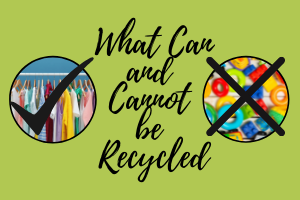
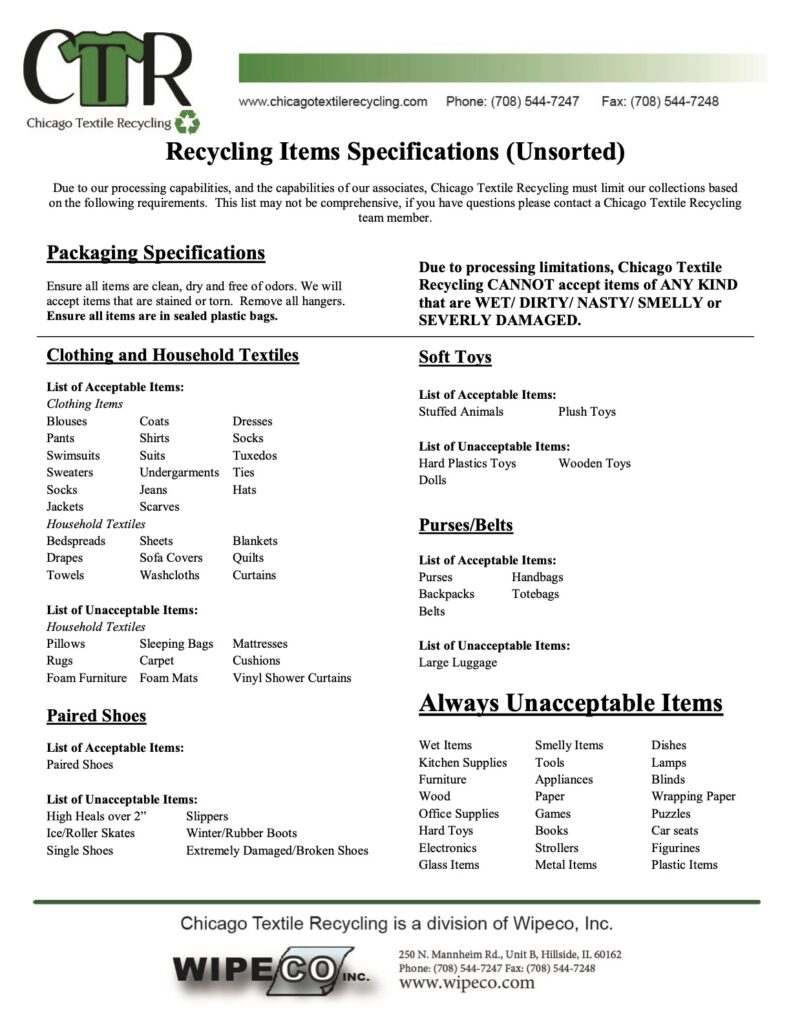
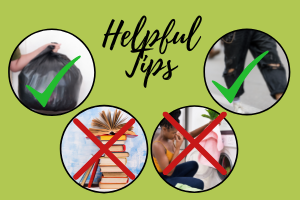

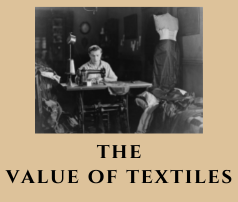

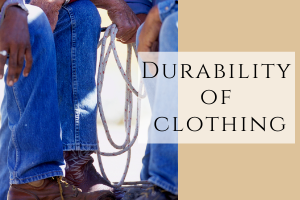
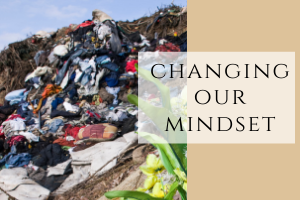
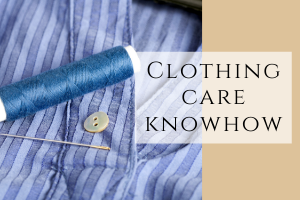

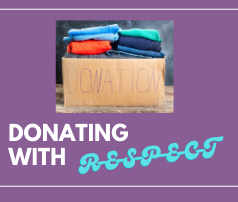

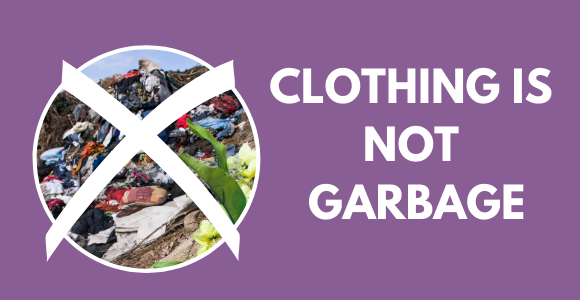
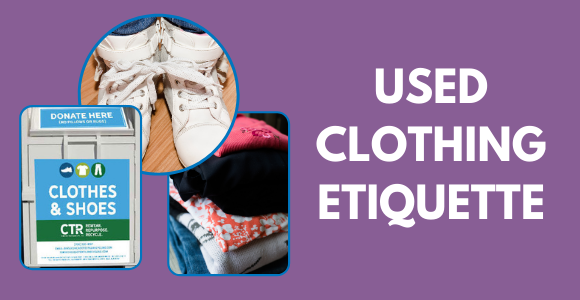
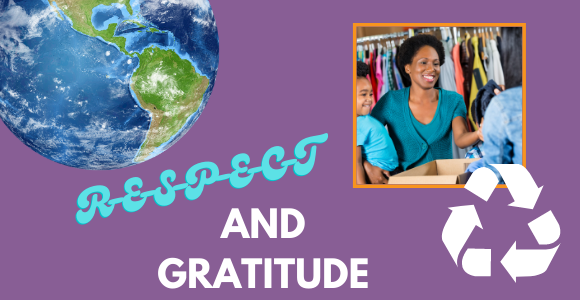


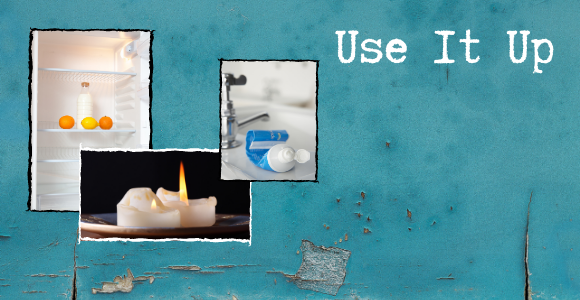
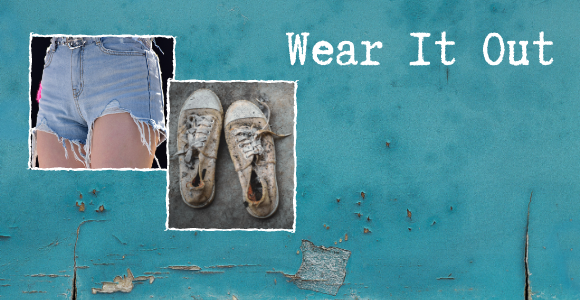
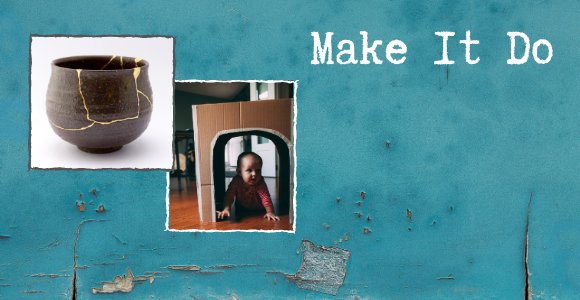


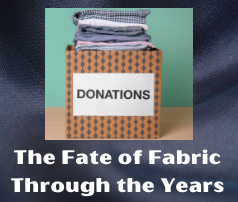

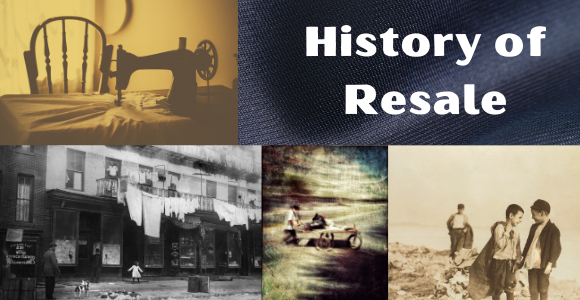

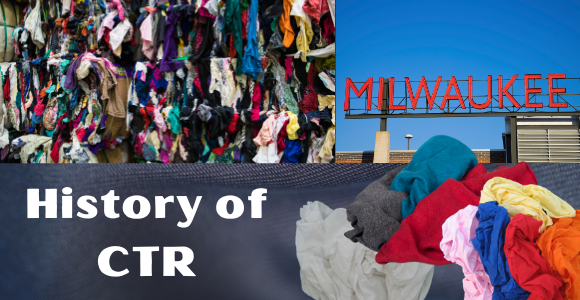
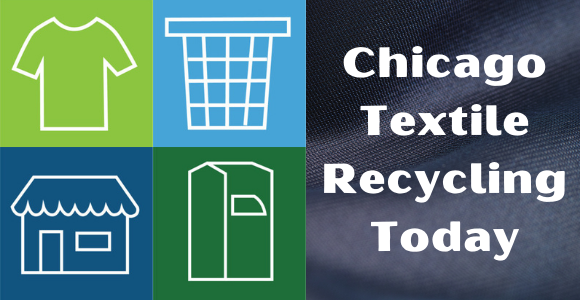
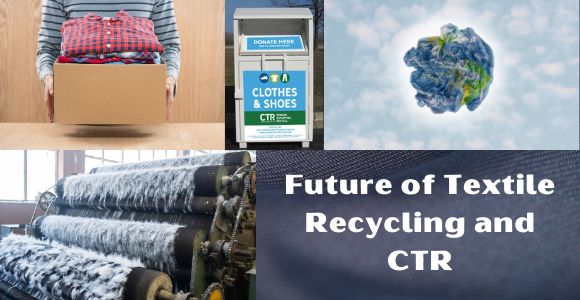
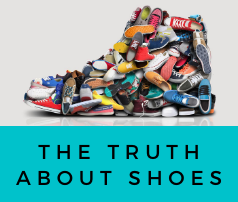
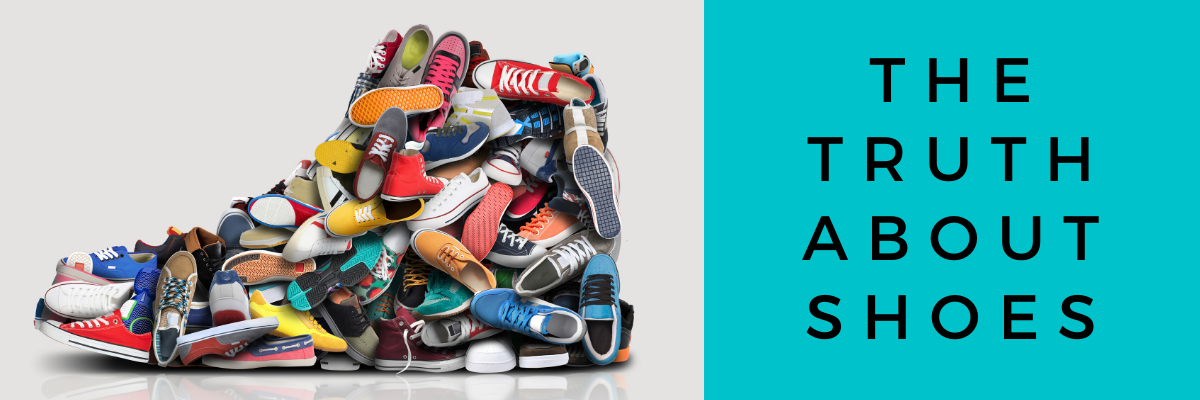

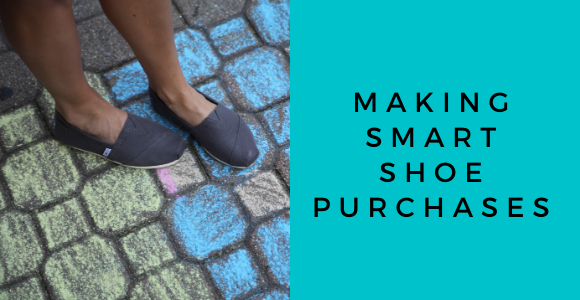
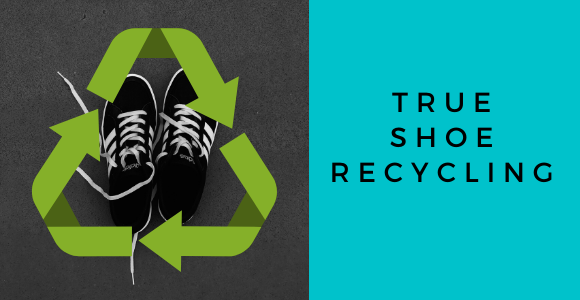
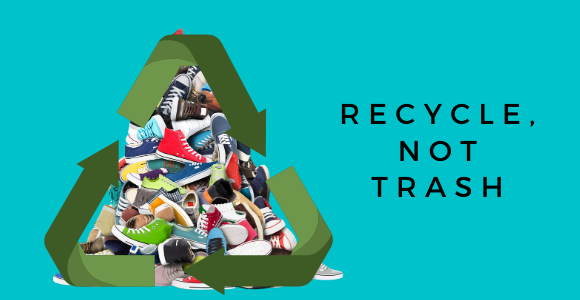
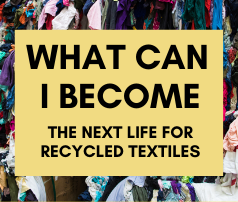
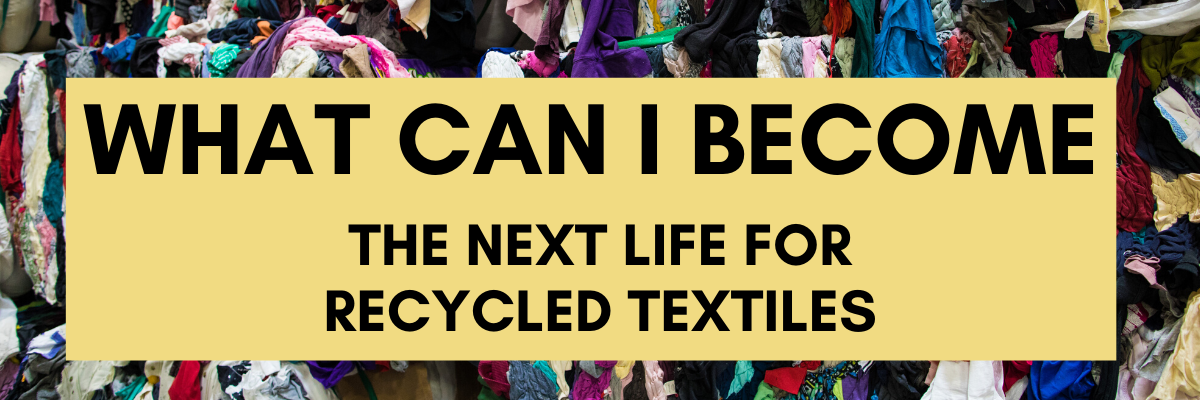

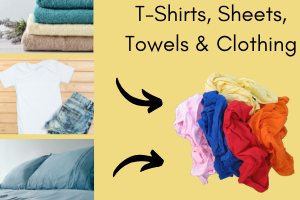 T-shirts, sheets, towels and clothing can become wiping rags. T-shirts and clothing in good or great condition are typically resold in stores or sent to other countries to provide clothing for the population there, but for t-shirts and clothing that is not salvageable for reuse, and for towels and sheets, many times it is recycled into wiping rags.
T-shirts, sheets, towels and clothing can become wiping rags. T-shirts and clothing in good or great condition are typically resold in stores or sent to other countries to provide clothing for the population there, but for t-shirts and clothing that is not salvageable for reuse, and for towels and sheets, many times it is recycled into wiping rags.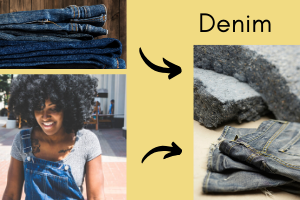 Denim can become home insulation. For denim jeans, skirts, overalls and other products that are in good condition, they can be resold and reused. However for denim that is not in the best shape or stained or torn too much, it can be shredded and used as home insulation. This is a great way to keep denim out of landfills and give it another life in a different form that is beneficial for textile recycling and keeping your home warm.
Denim can become home insulation. For denim jeans, skirts, overalls and other products that are in good condition, they can be resold and reused. However for denim that is not in the best shape or stained or torn too much, it can be shredded and used as home insulation. This is a great way to keep denim out of landfills and give it another life in a different form that is beneficial for textile recycling and keeping your home warm.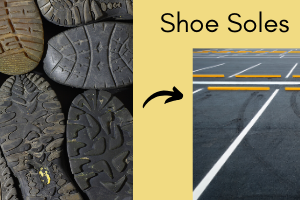 Shoe soles can become paving material. When shoe soles contain fine rubber powder, they can be recycled as rubber granulate that then combines with a binder and goes into creating roads, running tracks, playground surfacing, railroad pads and more. Shoes are high in demand as a reuse and resale product, but for those that don’t make the cut, they can be used for paving material.
Shoe soles can become paving material. When shoe soles contain fine rubber powder, they can be recycled as rubber granulate that then combines with a binder and goes into creating roads, running tracks, playground surfacing, railroad pads and more. Shoes are high in demand as a reuse and resale product, but for those that don’t make the cut, they can be used for paving material.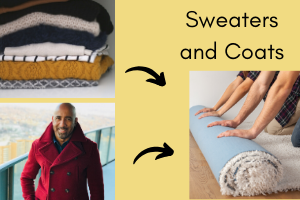 Sweaters and coats can become carpet padding. Similar to denim that is broken down and made into insulation, sweaters and coats that are no longer reusable can be downcycled into carpet padding. One of the three methods of recycling textiles we discuss on our website is breaking the textiles down into fiber content. This would be the case for making carpet padding from sweaters and coats. Carpet padding is another great way to keep textiles out of landfills and give them a new purpose and life.
Sweaters and coats can become carpet padding. Similar to denim that is broken down and made into insulation, sweaters and coats that are no longer reusable can be downcycled into carpet padding. One of the three methods of recycling textiles we discuss on our website is breaking the textiles down into fiber content. This would be the case for making carpet padding from sweaters and coats. Carpet padding is another great way to keep textiles out of landfills and give them a new purpose and life.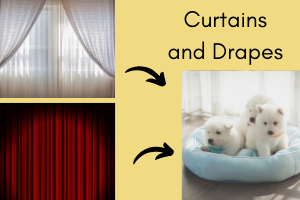 Curtains and drapes can become stuffing for pillows, sleeping bags and animal beds. In the same way as products mentioned previously, curtains and drapes can be recycled into fiber content used to stuff those three products. For curtains and drapes in good condition, they can be cleaned and resold. But for those too stained and/or torn to be reused, they may end up as filling for new products that need a little fluff.
Curtains and drapes can become stuffing for pillows, sleeping bags and animal beds. In the same way as products mentioned previously, curtains and drapes can be recycled into fiber content used to stuff those three products. For curtains and drapes in good condition, they can be cleaned and resold. But for those too stained and/or torn to be reused, they may end up as filling for new products that need a little fluff.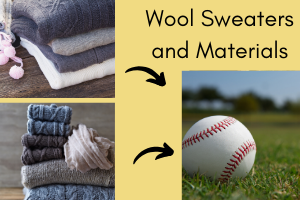 Wool sweaters and materials can become baseball and softball filling. Ever wonder what baseballs and softballs have on the inside giving them the density and weight to be used for sport? At the core is rubber or cork, which is then wrapped in wool and poly/cotton windings, with a cowhide exterior. For those wool sweaters and materials that are falling apart, donate them even if you don’t think they would be considered for reuse. They can become filling for America’s favorite sport.
Wool sweaters and materials can become baseball and softball filling. Ever wonder what baseballs and softballs have on the inside giving them the density and weight to be used for sport? At the core is rubber or cork, which is then wrapped in wool and poly/cotton windings, with a cowhide exterior. For those wool sweaters and materials that are falling apart, donate them even if you don’t think they would be considered for reuse. They can become filling for America’s favorite sport.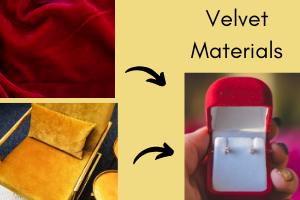 Velvet materials can become jewelry box lining. Though velvet isn’t as popular a textile as it once was, you can still find it being used in various forms such as curtains, pants, furniture and blazers here and there. When no longer in need of your favorite velvety smooth textile, please donate it. If the item is not suitable for reuse, it can become box lining for your next jewelry purchase.
Velvet materials can become jewelry box lining. Though velvet isn’t as popular a textile as it once was, you can still find it being used in various forms such as curtains, pants, furniture and blazers here and there. When no longer in need of your favorite velvety smooth textile, please donate it. If the item is not suitable for reuse, it can become box lining for your next jewelry purchase.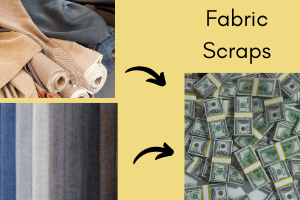 Leftover fabric scraps can become paper money. As explained in this
Leftover fabric scraps can become paper money. As explained in this 

 Amongst those who took the survey, the room most likely to get deep cleaned was the bathroom: “46% reported that the bathroom was the room they most likely chose to ‘deep clean’.” As you clean the bathroom this Spring, remember to declutter as well. Check the drawers and closets in your bathroom to assess which towels and washcloths no longer get used or absorb as they should. Check also your beach towel stash for the summer ahead and recycle any beach towels that you no longer need or use. Lastly, If you are looking to give your bathroom an inexpensive makeover, also remember to recycle your cloth shower curtain. For information about recycling bins and partner stores nearest to you, please
Amongst those who took the survey, the room most likely to get deep cleaned was the bathroom: “46% reported that the bathroom was the room they most likely chose to ‘deep clean’.” As you clean the bathroom this Spring, remember to declutter as well. Check the drawers and closets in your bathroom to assess which towels and washcloths no longer get used or absorb as they should. Check also your beach towel stash for the summer ahead and recycle any beach towels that you no longer need or use. Lastly, If you are looking to give your bathroom an inexpensive makeover, also remember to recycle your cloth shower curtain. For information about recycling bins and partner stores nearest to you, please  The second most likely room to be deep cleaned (with 36%) according to the survey was the kitchen. This is usually comprised of pulling ovens and refrigerators out to sweep underneath or behind, deep cleaning the oven and fridge, sinks and stovetops, and mopping or scrubbing floors. As you complete these tedious but necessary tasks, look around at the textiles in this room also and see what needs to be recycled. Kitchen towels, non-vinyl tablecloths, table runners, cloth placemats and oven mitts at times will need an overhaul, and when they do, remember to recycle these items and do not throw them away.
The second most likely room to be deep cleaned (with 36%) according to the survey was the kitchen. This is usually comprised of pulling ovens and refrigerators out to sweep underneath or behind, deep cleaning the oven and fridge, sinks and stovetops, and mopping or scrubbing floors. As you complete these tedious but necessary tasks, look around at the textiles in this room also and see what needs to be recycled. Kitchen towels, non-vinyl tablecloths, table runners, cloth placemats and oven mitts at times will need an overhaul, and when they do, remember to recycle these items and do not throw them away. The next room most likely (10%) to be deep cleaned this spring is the living room. Although we do not accept pillows or rugs, we do accept pillow covers, sofa covers, drapes or curtains, and blankets that you may find in your living room. Even if it is tattered, stained or contains holes, please donate it so that we can best decide how to give it another life elsewhere. For where to donate your rugs, carpets or pillows, check out our previous blog about
The next room most likely (10%) to be deep cleaned this spring is the living room. Although we do not accept pillows or rugs, we do accept pillow covers, sofa covers, drapes or curtains, and blankets that you may find in your living room. Even if it is tattered, stained or contains holes, please donate it so that we can best decide how to give it another life elsewhere. For where to donate your rugs, carpets or pillows, check out our previous blog about  From those surveyed, seven percent answered they deep cleaned bedrooms as well during spring cleaning. Bedrooms are where the majority of textiles can be found in your home as bedding and clothes constitute the majority of what we own in textiles. As you move your bed aside to vacuum underneath and dust dressers and bookshelves, take the time to declutter as well in your spring cleaning and clean out your closets, dressers and excess bedding. No matter how you go about the process, it will feel good to go through and assess what you already own, what you may need, what no longer fits or is no longer in good shape to wear and recycle those items you’ve realized are not getting worn.
From those surveyed, seven percent answered they deep cleaned bedrooms as well during spring cleaning. Bedrooms are where the majority of textiles can be found in your home as bedding and clothes constitute the majority of what we own in textiles. As you move your bed aside to vacuum underneath and dust dressers and bookshelves, take the time to declutter as well in your spring cleaning and clean out your closets, dressers and excess bedding. No matter how you go about the process, it will feel good to go through and assess what you already own, what you may need, what no longer fits or is no longer in good shape to wear and recycle those items you’ve realized are not getting worn. One area of your home not mentioned by those who took the survey but equally important in cleaning out this season are your closets, such as linen closets, hall closets, and front closets. At Chicago Textile Recycling, we accept sheets, bedspreads, jackets, coats, scarves, hats, mittens, and quilts in addition to those items mentioned above such as handbags and backpacks. All of these items may be ones only found in extra closets around the house, so be sure to clean these out as well before making a trip to the donation bin or resale store.
One area of your home not mentioned by those who took the survey but equally important in cleaning out this season are your closets, such as linen closets, hall closets, and front closets. At Chicago Textile Recycling, we accept sheets, bedspreads, jackets, coats, scarves, hats, mittens, and quilts in addition to those items mentioned above such as handbags and backpacks. All of these items may be ones only found in extra closets around the house, so be sure to clean these out as well before making a trip to the donation bin or resale store. 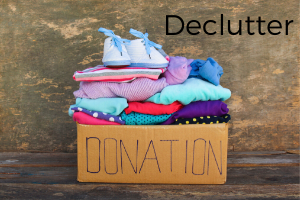 Twenty-two percent of survey respondents cited decluttering as their primary reason for spring cleaning each year. If you are a part of that 22%, or even if you aren’t, try decluttering as a part of your spring cleaning this year and see if living with less reduces anxiety and makes you feel better in the space where you live. “Women’s stress levels are directly proportional to the amount of stuff in their homes.” I have found this to be true in my home. I feel more relaxed when there are less piles on each tabletop and when things are put away in their proper place. According to the National Soap and Detergent Association, “getting rid of clutter eliminates 40% of housework in the average home.” Who wouldn’t want less housework?!
Twenty-two percent of survey respondents cited decluttering as their primary reason for spring cleaning each year. If you are a part of that 22%, or even if you aren’t, try decluttering as a part of your spring cleaning this year and see if living with less reduces anxiety and makes you feel better in the space where you live. “Women’s stress levels are directly proportional to the amount of stuff in their homes.” I have found this to be true in my home. I feel more relaxed when there are less piles on each tabletop and when things are put away in their proper place. According to the National Soap and Detergent Association, “getting rid of clutter eliminates 40% of housework in the average home.” Who wouldn’t want less housework?!
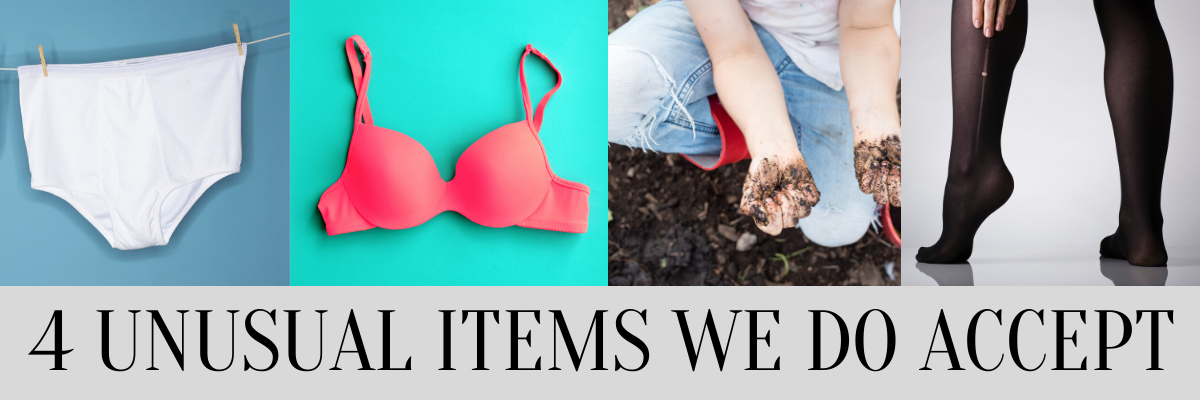
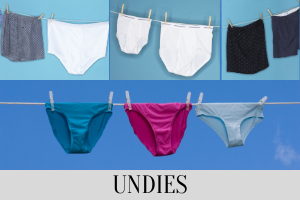 Most people assume that once underwear is worn and no longer wearable due to holes and broken elastic, it is trash. Either the person is embarrassed about having someone else see their used undies, or it just doesn’t cross their mind that this would be a product that recycling facilities may want. However, to clarify the confusion, CTR does accept used panties and underwear as long as they are clean, dry, and odor-free, and they actually are in high demand due to people being so reticent about donating them. When it comes to keeping textiles out of landfills, we want to recycle as much as possible…into reusable clothing if possible, into wiping rags, or into basic fiber content. So send us your undies!
Most people assume that once underwear is worn and no longer wearable due to holes and broken elastic, it is trash. Either the person is embarrassed about having someone else see their used undies, or it just doesn’t cross their mind that this would be a product that recycling facilities may want. However, to clarify the confusion, CTR does accept used panties and underwear as long as they are clean, dry, and odor-free, and they actually are in high demand due to people being so reticent about donating them. When it comes to keeping textiles out of landfills, we want to recycle as much as possible…into reusable clothing if possible, into wiping rags, or into basic fiber content. So send us your undies! Another item most people assume may not be an acceptable donation are bras, but there in fact exists a high demand for used bras. Brand new bras are very expensive, and so those that are used but still in workable condition should definitely be donated to your nearest bin. Resale store shoppers and even those receiving bulk donations in third world countries appreciate and need affordable bras. Even bras you may no longer consider wearable due to pilling or small holes or loosened elastic can be worn by others in need. If your bra is broken, recycle it anyway and allow CTR or the resale store be the final judge on how we can use it.
Another item most people assume may not be an acceptable donation are bras, but there in fact exists a high demand for used bras. Brand new bras are very expensive, and so those that are used but still in workable condition should definitely be donated to your nearest bin. Resale store shoppers and even those receiving bulk donations in third world countries appreciate and need affordable bras. Even bras you may no longer consider wearable due to pilling or small holes or loosened elastic can be worn by others in need. If your bra is broken, recycle it anyway and allow CTR or the resale store be the final judge on how we can use it. One item you may think twice about donating is children’s clothing that has stains or holes in the knees. Again, children’s clothing is in high demand and we definitely do accept clothes with both of those imperfections. As long as the clothing is clean, dry, and free of odor, we accept it and use it in any reused or recycled form we can. When in doubt, recycle. Allow the experts in textile recycling make the final call in knowing if a textile is in fact as its end of life. Be satisfied in knowing that you have done your part in helping others and keeping textiles out of landfills.
One item you may think twice about donating is children’s clothing that has stains or holes in the knees. Again, children’s clothing is in high demand and we definitely do accept clothes with both of those imperfections. As long as the clothing is clean, dry, and free of odor, we accept it and use it in any reused or recycled form we can. When in doubt, recycle. Allow the experts in textile recycling make the final call in knowing if a textile is in fact as its end of life. Be satisfied in knowing that you have done your part in helping others and keeping textiles out of landfills. Lastly, pantyhose is an item that we do accept, but may fall into a slightly different category due to lack of demand. You are welcome to donate your used pantyhose/stockings/tights to us, or another option could also be found on
Lastly, pantyhose is an item that we do accept, but may fall into a slightly different category due to lack of demand. You are welcome to donate your used pantyhose/stockings/tights to us, or another option could also be found on